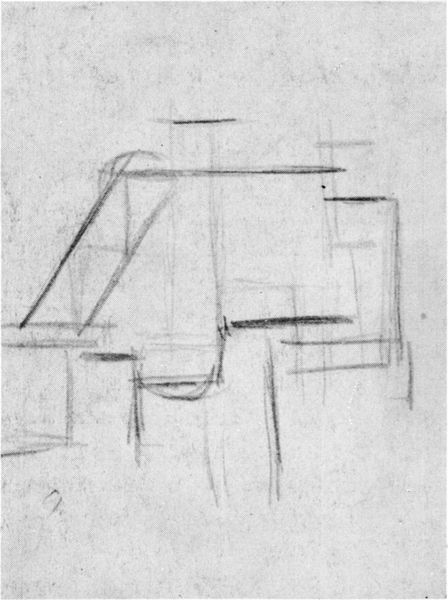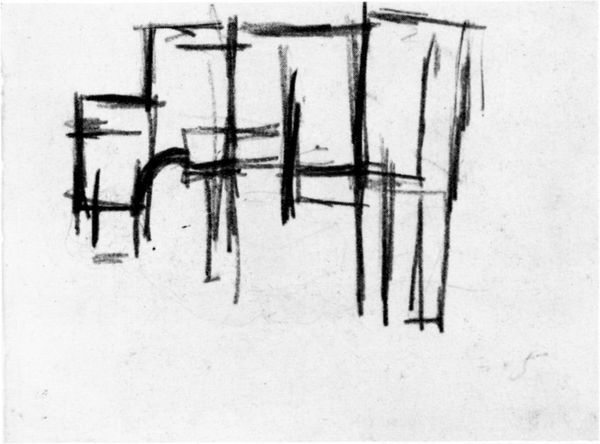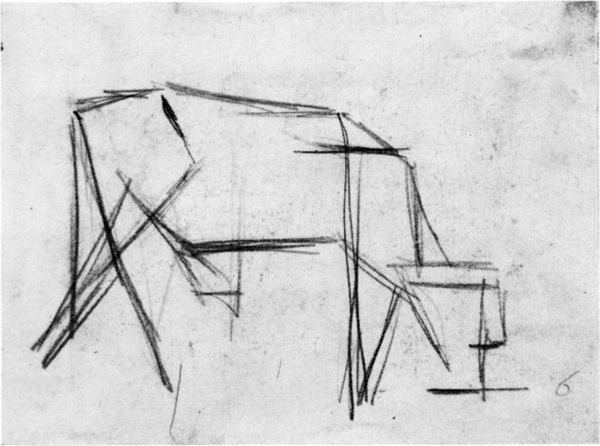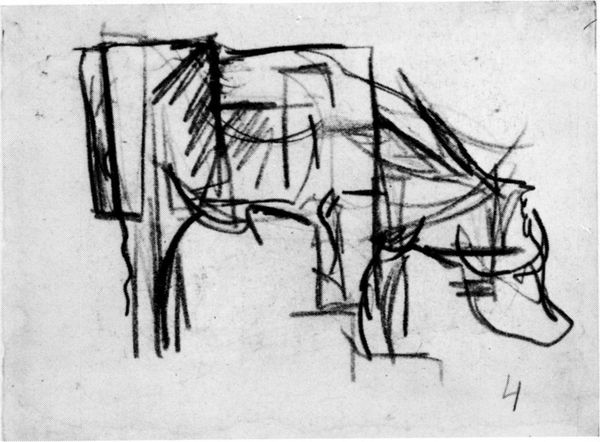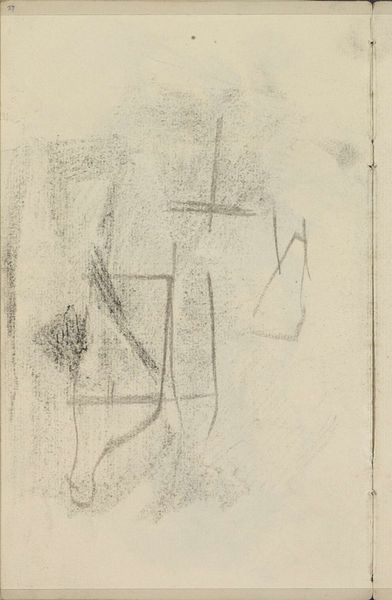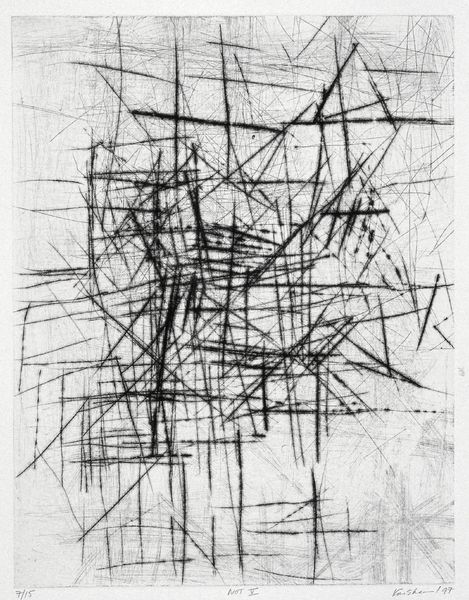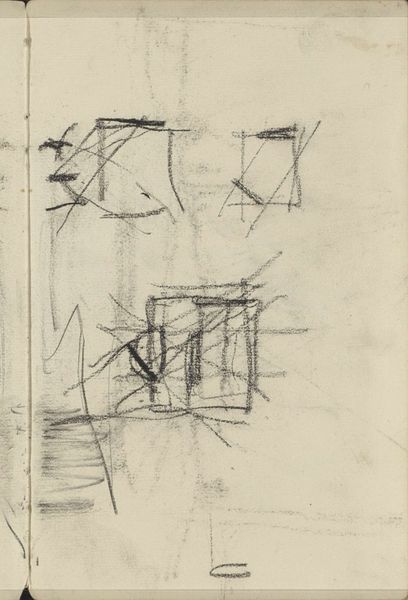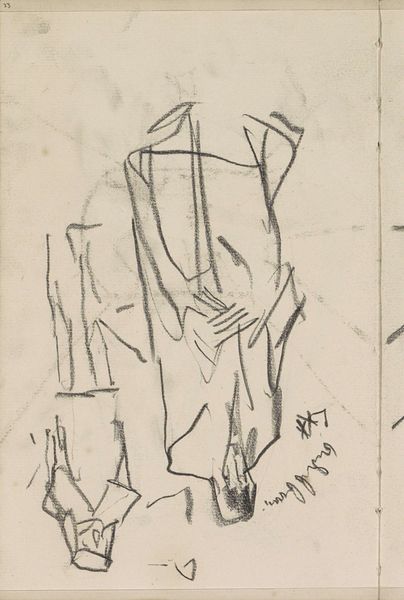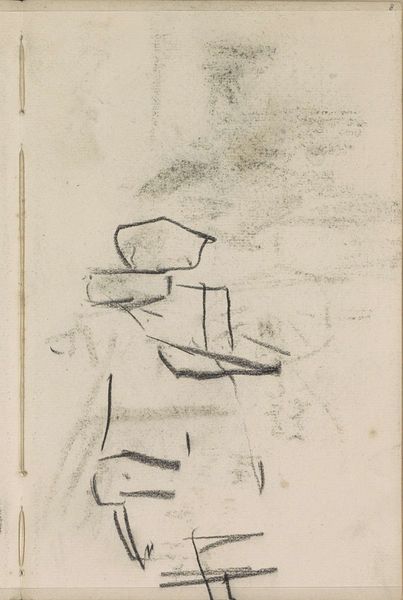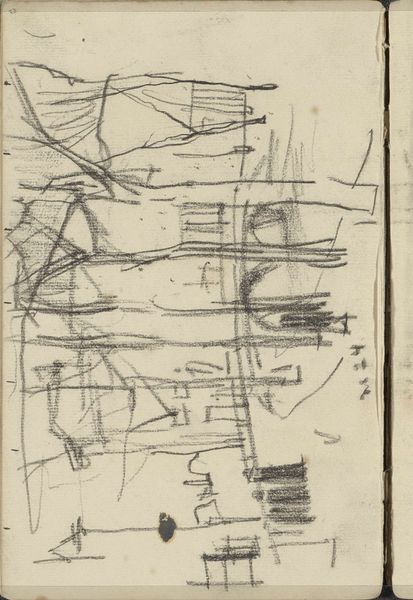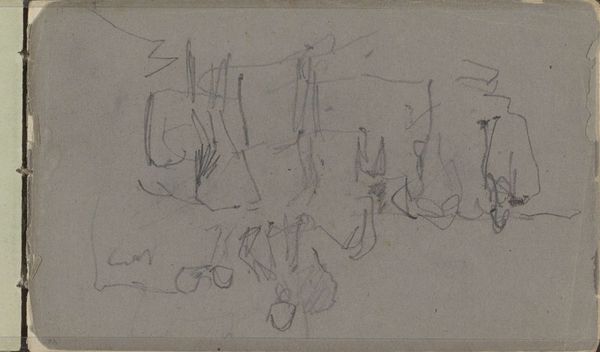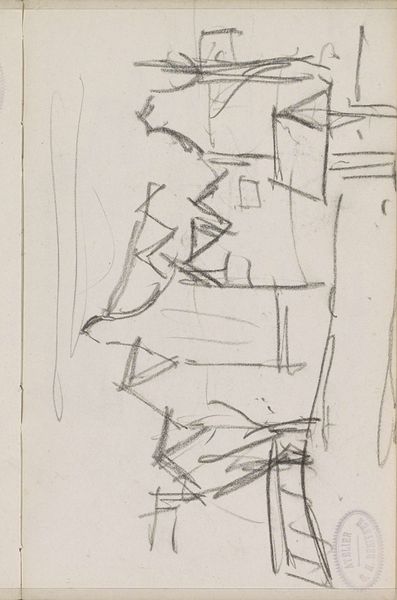
drawing, paper, graphite
#
drawing
#
de-stijl
#
paper
#
geometric-abstraction
#
abstraction
#
line
#
graphite
Dimensions: 15.9 x 11.7 cm
Copyright: Public domain
Editor: Here we have Theo van Doesburg's "Composition (The Cow)," created in 1917 using graphite on paper. It's a seemingly simple drawing, almost like an unfinished sketch, but the use of geometric lines really captures my attention. What do you see in this piece? Curator: This drawing exemplifies the De Stijl movement, an attempt to reduce forms to their absolute essence. Note the way Van Doesburg moves from the recognizable form of a cow toward pure abstraction, the linear progression revealing the artist's thought process. Editor: So you are saying that this drawing is a process of stripping the cow of its essence? Is the underlying form then the important piece? Curator: Precisely. The subject, initially identifiable, becomes secondary to the relationship between line, form, and spatial organization. We can analyze how the artist uses vertical and horizontal lines to create a sense of balance and order. The variations in line weight and density are also key, disrupting any notion of static equilibrium. Consider the empty spaces – what role do they play? Editor: I see. They provide visual breathing room that makes the solid areas more coherent; there is a rhythm here! Also, is it normal that only some of the lines appear thicker, like the heavier lines create frames? Curator: Exactly. This use of line emphasizes structural integrity. Do you think the drawing achieves total abstraction? Editor: Hmm, while geometric, the fainter, initial lines still vaguely hint at a cow. Perhaps complete abstraction wasn't fully achieved here, or wasn’t the sole objective. I also realize I see the De Stijl approach here in how the form is broken down to basic elements! Thanks for explaining all this. Curator: My pleasure! Observing how artists explore form can shift our approach to art.
Comments
No comments
Be the first to comment and join the conversation on the ultimate creative platform.
